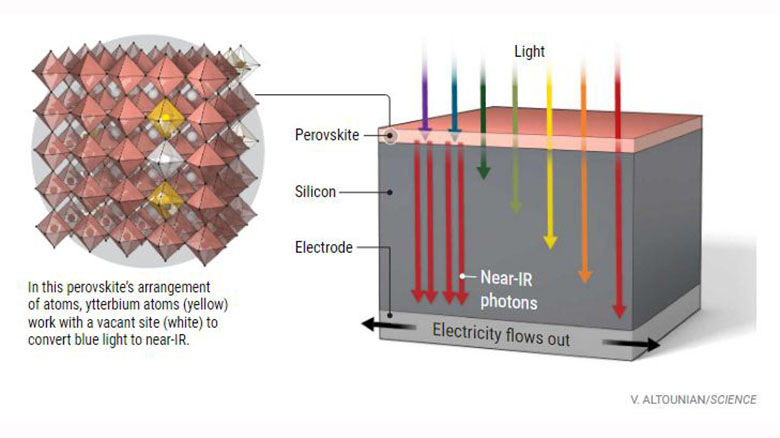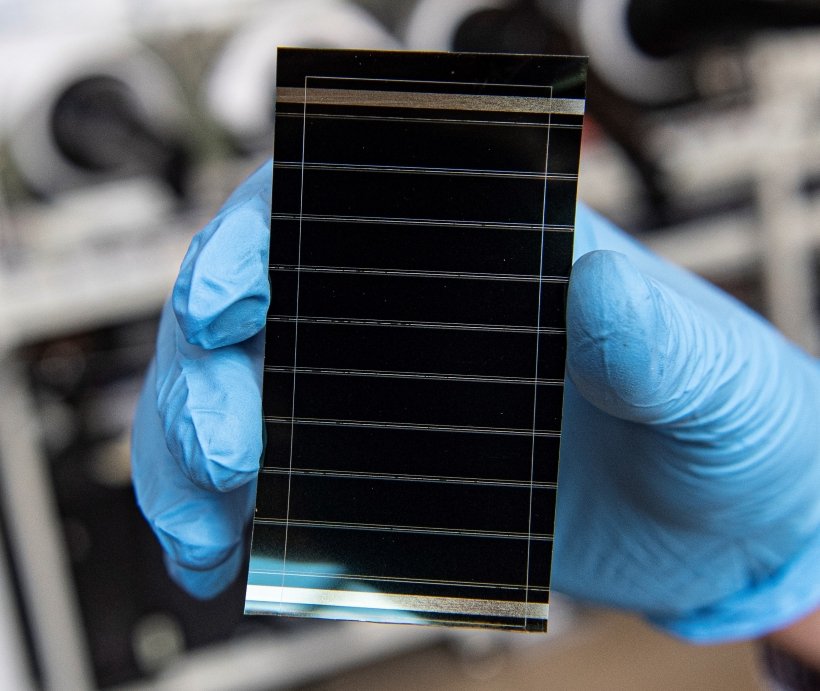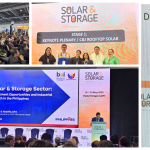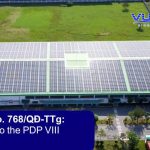
In the pursuit of renewable energy, scientists and engineers are constantly searching for ways to make solar cells more efficient and cost-effective. One promising approach is to marrying two types of solar cells, each with its own unique properties, to create a hybrid system that can harvest more energy from the sun. In this article, we will explore the concept of hybrid solar cells, specifically the combination of silicon and perovskite solar cells, and how it can potentially revolutionize the solar industry.
- What are the advantages of businesses pursuing sustainable development?
- Solar energy for the Plastic Industry
Introduction to Hybrid Solar Cells
Solar cells, also known as photovoltaic cells, convert sunlight into electricity through the photovoltaic effect. When sunlight hits the solar cell, it excites the electrons in the cell’s semiconductor material, creating a flow of electrons that can be captured as electrical current. However, different materials have different properties when it comes to absorbing different wavelengths of light, and thus different types of solar cells have different efficiency rates.
Hybrid solar cells combine two or more types of solar cells to achieve a better performance than any of the individual cells. By combining materials that absorb different parts of the solar spectrum, hybrid solar cells can capture more of the sun’s energy and generate more electricity.
The Silicon-Perovskite Solar Cell Hybrid
Silicon solar cells are the most widely used type of solar cells, with a proven track record of reliability and efficiency. However, they have a limited efficiency in converting solar energy to electricity. Perovskite solar cells, on the other hand, have a higher efficiency rate but are less stable and have a shorter lifespan. By combining the two types of solar cells, researchers have found a way to achieve both efficiency and stability.
The silicon-perovskite solar cell hybrid works by placing a thin layer of perovskite material on top of a silicon solar cell. The perovskite material absorbs the high-energy part of the solar spectrum, while the silicon cell absorbs the low-energy part. This combination allows for a more efficient conversion of solar energy into electricity. Additionally, the silicon layer provides stability to the perovskite layer, which tends to degrade quickly in the presence of moisture and oxygen.

Advantages of the Silicon-Perovskite Solar Cell Hybrid
The combination of silicon and perovskite solar cells offers several advantages over traditional solar cells, including:
Higher Efficiency
The silicon-perovskite hybrid solar cell has a higher efficiency rate than traditional silicon solar cells. Studies have shown that the combination of the two types of cells can achieve efficiencies of up to 29%, compared to the maximum efficiency of 26% for silicon solar cells alone.
Lower Cost
Perovskite solar cells are made from abundant and inexpensive materials, making them cheaper to produce than traditional silicon solar cells. By combining the two types of cells, the overall cost of the hybrid system can be reduced.
More Versatility
Perovskite solar cells can be made in different colors and shapes, which makes them more versatile than traditional silicon solar cells. The ability to customize the shape and color of the cells can make them more aesthetically pleasing and easier to integrate into buildings and other structures.
Challenges and Limitations
While the silicon-perovskite hybrid solar cell shows great promise, there are still some challenges and limitations that need to be addressed:
Stability and Durability
Perovskite solar cells have a short lifespan and are vulnerable to degradation in the presence of moisture and oxygen. Researchers are working to develop more stable and durable perovskite materials to address this issue.
Manufacturing Process
The manufacturing process for perovskite solar cells is still relatively new and not yet as efficient as that for silicon solar cells. Researchers are working to further optimize the manufacturing process and improve the durability and stability of perovskite solar cells. One promising approach is to combine perovskite solar cells with silicon solar cells to create a tandem solar cell.
Marrying Two Types of Solar Cells: Tandem Solar Cells
How Tandem Solar Cells Work
A tandem solar cell is a combination of two different types of solar cells stacked on top of each other. The top cell is a perovskite solar cell, while the bottom cell is a silicon solar cell. The perovskite solar cell absorbs high-energy photons, while the silicon solar cell absorbs low-energy photons. The two cells are connected by a tunnel junction, which allows electrons to flow between the cells.
Advantages of Tandem Solar Cells
Tandem solar cells have several advantages over single-junction solar cells. First, they can achieve higher efficiency than single-junction solar cells. By combining two different types of solar cells, tandem solar cells can harvest a wider range of the solar spectrum. This allows them to convert more of the energy from the sun into electricity. Second, tandem solar cells can be more stable and durable than single-junction solar cells. The silicon bottom cell provides a stable foundation for the perovskite top cell, which is more prone to degradation from moisture, heat, and light.
Challenges of Tandem Solar Cells
Despite their advantages, tandem solar cells also present several challenges. One major challenge is the design of the tunnel junction, which must be carefully engineered to allow efficient electron transfer between the cells. Another challenge is the manufacturing process, which must be carefully controlled to ensure that both cells are properly aligned and connected. Finally, tandem solar cells are more complex and expensive to manufacture than single-junction solar cells.
Perovskite solar cells have the potential to revolutionize the solar energy industry with their high efficiency and low cost. However, they also present challenges related to their durability and stability. One promising solution to these challenges is the development of tandem solar cells, which combine perovskite and silicon solar cells to create a more efficient and stable solar cell. While there are still challenges to be overcome in the design and manufacturing of tandem solar cells, their potential for high efficiency and durability make them a promising avenue for future solar energy research.
Vu Phong Energy Group




